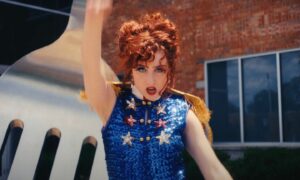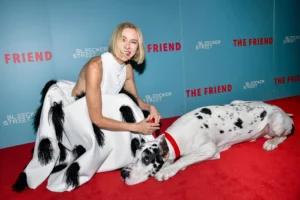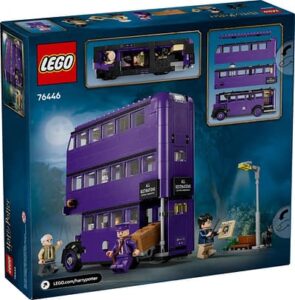When We Were Young (WWWY), the nostalgic emo and pop-punk festival that took the music world by storm in 2022, has announced its set times for the 2024 edition, along with some exciting lineup additions, including Boys Like Girls. The festival, which is designed to celebrate the bands and sounds that defined the emo and pop-punk scenes of the 2000s, has quickly become one of the most anticipated music events for fans who grew up in that era. The announcement of set times, as well as the addition of fan-favorites like Boys Like Girls, has generated renewed excitement for what promises to be an unforgettable weekend in Las Vegas.
The announcement offers an opportunity to reflect on the unique appeal of When We Were Young, its rise as a cultural phenomenon, and its role in reinvigorating the emo genre. This critical exploration will delve into the festival’s origins, the significance of its nostalgic appeal, and how it continues to expand and evolve, especially with the addition of bands like Boys Like Girls to the lineup. We’ll also explore the broader cultural implications of the emo revival and its continued relevance in today’s music landscape.
The Origins and Appeal of When We Were Young Festival
When We Were Young Festival was first announced in early 2022, and it immediately captured the attention of fans who had longed for the days of Warped Tour, MySpace, and Hot Topic. The initial lineup read like a time capsule of the mid-2000s emo and pop-punk scene, featuring bands like My Chemical Romance, Paramore, Taking Back Sunday, and Dashboard Confessional. For many fans, this lineup felt like a dream come true—an opportunity to relive the music that had shaped their teenage years and, in many ways, defined a generation.
The festival’s name, “When We Were Young,” features to potentially encapsulate the emotional undercurrent driving its appeal. It taps into a deep sense of nostalgia, particularly for millennials who came of age during the emo and pop-punk explosion of the early 2000s. This era was defined by its emotional lyrics, anthemic choruses, and the sense of belonging it offered to a generation of teens who often felt misunderstood or out of place. Bands like Fall Out Boy, Panic! at the Disco, and The Used gave voice to feelings of angst, heartbreak, and identity struggles, creating a cultural movement that resonated deeply with fans.
When We Were Young capitalized on this nostalgia, offering a festival experience that felt like stepping back in time. The festival’s debut in 2022 was met with enormous demand, selling out almost immediately and prompting the addition of more dates. The success of the festival proved that the emo revival was not just a fleeting trend but a powerful cultural force with lasting appeal.
The 2024 Lineup: Boys Like Girls and More
The 2024 edition of When We Were Young promises to build on the success of previous years, with a stacked lineup that includes both returning favorites and new additions. Boys Like Girls, one of the most beloved pop-punk bands of the mid-2000s, has been added to the lineup, much to the delight of fans. Known for their infectious hits like “The Great Escape” and “Thunder,” Boys Like Girls played a pivotal role in shaping the pop-punk scene during its peak, and their inclusion in the 2024 lineup is a testament to the festival’s commitment to curating a lineup that reflects the diversity and depth of the emo and pop-punk genres.
Boys Like Girls’ music blends the high-energy, anthemic sound of pop-punk with emotionally charged lyrics, a combination that made them favorites among fans of the genre. Their addition to the lineup underscores the festival’s desire to appeal to fans who were deeply immersed in the scene during its heyday, while also offering a platform for younger fans who have discovered the genre in recent years.
In addition to Boys Like Girls, the 2024 lineup features a mix of legacy acts and newer bands that have carried the torch for emo and pop-punk into the modern era. Bands like The All-American Rejects, Jimmy Eat World, and Good Charlotte will share the stage with newer acts like Waterparks and Hot Mulligan, creating an intergenerational festival experience that bridges the gap between emo’s past and present. This blending of eras is one of the festival’s greatest strengths, as it allows for a cross-generational celebration of the genre’s enduring appeal.
Set Times and the Festival Experience
With the announcement of the 2024 set times, fans can now begin planning their festival experience in earnest. One of the biggest challenges of attending a festival like When We Were Young is the sheer number of bands and the inevitable schedule conflicts that arise. With so many iconic acts on the bill, fans will have to make tough choices about which performances to prioritize.
The set times also offer a glimpse into the festival’s structure and flow. Headlining sets by genre-defining bands like Fall Out Boy, Paramore, and My Chemical Romance are sure to draw massive crowds, while smaller stages will feature a mix of up-and-coming bands and cult favorites. The festival’s schedule is carefully curated to ensure that fans can experience a broad range of acts while also preserving the intimacy and energy that are hallmarks of live emo and pop-punk performances.
The festival’s location in Las Vegas adds another layer of excitement to the experience. Las Vegas, with its vibrant nightlife and iconic entertainment scene, provides a unique backdrop for When We Were Young, offering attendees the opportunity to explore the city while immersing themselves in the music that defined their youth. The combination of a nostalgic music festival with the electric energy of Las Vegas creates a one-of-a-kind experience that is sure to leave a lasting impression on attendees.
The Emo Revival and Its Cultural Significance
When We Were Young Festival is not just about nostalgia for the past—it is also a reflection of the continued relevance of emo and pop-punk in today’s music landscape. While the genres may have peaked in popularity during the 2000s, their influence can still be felt in the music being made today, particularly among younger artists who grew up listening to bands like Blink-182, Paramore, and Taking Back Sunday.
The emo revival has been driven in part by the rise of streaming platforms, which have made it easier for younger generations to discover and engage with music from past decades. Bands like My Chemical Romance and Fall Out Boy have enjoyed a resurgence in popularity as a result, with their music reaching new audiences who may not have experienced the emo movement firsthand. This has created a unique cultural moment where millennials who grew up with the genre can share their love of emo with Gen Z, fostering a sense of continuity and shared experience across generations.
Moreover, the emotional themes of emo—heartbreak, identity, mental health, and the search for belonging—remain as relevant today as they were two decades ago. In a world that has become increasingly complicated and uncertain, emo’s raw emotional honesty continues to resonate with listeners who are grappling with their own struggles. The genre’s ability to tap into deep, universal emotions is one of the reasons why it has endured for so long, and why festivals like When We Were Young continue to thrive.
The Evolution of When We Were Young Festival
While When We Were Young initially capitalized on nostalgia, the festival has also demonstrated a willingness to evolve and adapt to the changing music landscape. The inclusion of newer bands like Waterparks and Hot Mulligan in the 2024 lineup is a reflection of the festival’s commitment to staying relevant and showcasing the next generation of emo and pop-punk artists. These bands, while influenced by the sounds of the 2000s, bring their own modern sensibilities to the genre, blending emo with elements of indie rock, pop, and even hip-hop.
This blending of old and new is one of the festival’s greatest strengths. By featuring both legacy acts and contemporary artists, When We Were Young ensures that it remains a dynamic and forward-thinking event, rather than simply a nostalgia trip. The festival has become a platform for both celebrating the past and looking toward the future of emo and pop-punk, creating a space where different generations of fans and artists can come together.
The festival’s growth and success also speak to the enduring power of live music, particularly in the aftermath of the COVID-19 pandemic, which shuttered live venues and put a pause on touring for nearly two years. For many fans, When We Were Young represents a long-awaited opportunity to experience the music they love in a live setting, reconnecting with the communal energy of concerts and festivals. The return of live music has been a source of catharsis for both artists and fans, and When We Were Young taps into that desire for connection and shared experience.
When We Were Young as a Cultural Phenomenon
When We Were Young Festival has quickly become much more than just a nostalgic event—it has evolved into a cultural phenomenon that speaks to the enduring appeal of emo and pop-punk. The announcement of the 2024 set times, along with the addition of Boys Like Girls to the lineup, has only heightened the anticipation for what promises to be another iconic festival weekend.
The festival’s success is a testament to the power of music to evoke deep emotional connections and memories, while also demonstrating the genre’s continued relevance in the modern music landscape. For fans who grew up listening to emo and pop-punk, When We Were Young offers a chance to relive the music that shaped their youth, while also celebrating the genre’s evolution and influence on new generations of artists.
As the festival continues to grow and evolve, it will be exciting to see how When We Were Young balances its nostalgic roots with its forward-thinking approach to curation and programming. With its unique blend of legacy acts and contemporary artists, the festival is poised to remain a fixture in the live music scene for years to come, providing a space for fans to celebrate the past, present, and future of emo and pop-punk.
No comments yet.








